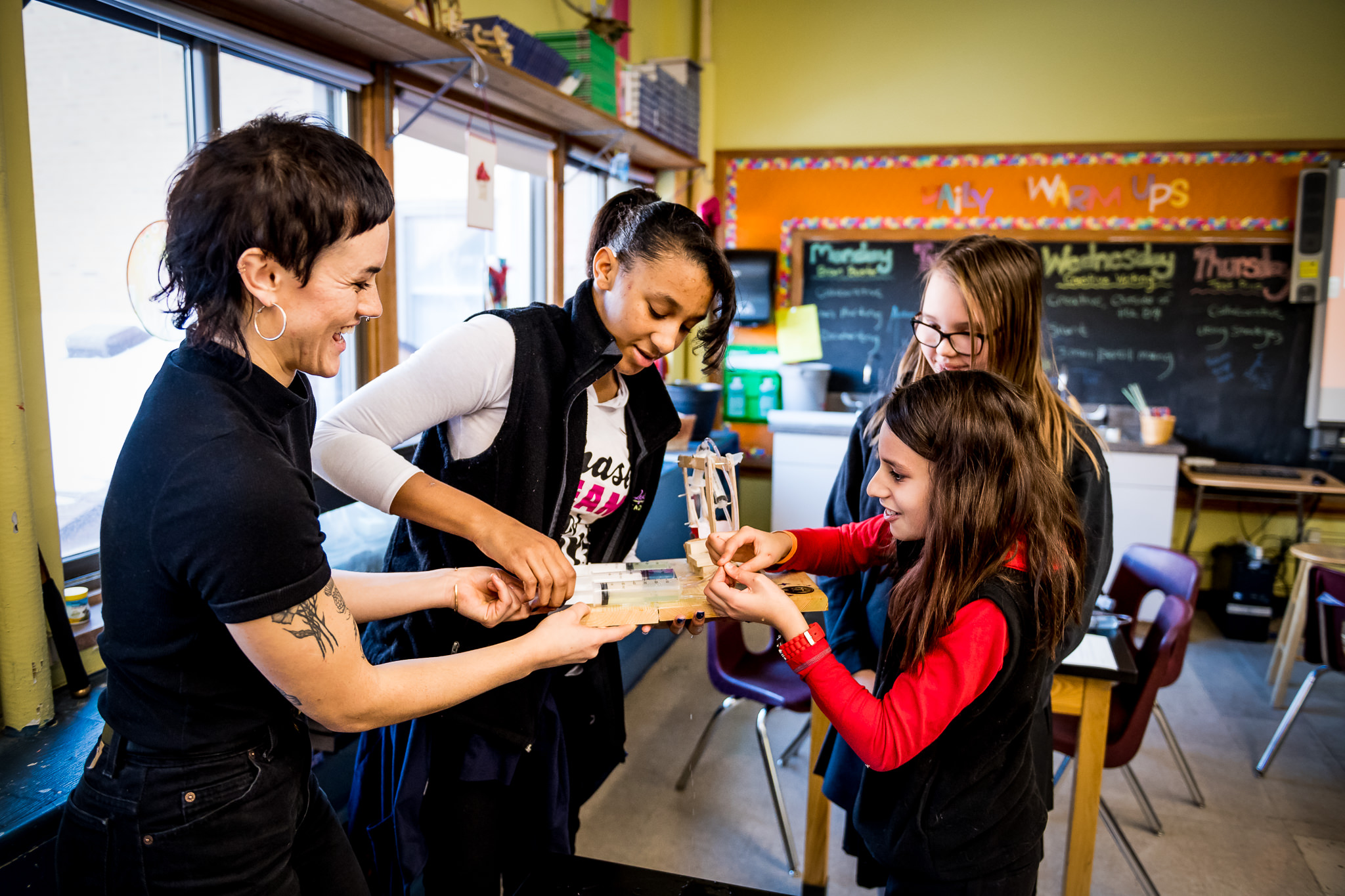Anna Robinson is a social studies teacher and leadership team member at Laura Jeffrey Academy in Saint Paul, Minnesota.
Laura Jeffrey Academy (LJA) opened its doors in 2007, offering Saint Paul (and Minnesota) its first girl-focused, STEM-focused middle school. At LJA’s inception, it followed a traditional administrative model led by an executive director. Over the years, as the school and staff grew, an education director and special programs director were added.
While following this traditional leadership framework, LJA’s strong, trusted and dedicated staff achieved autonomy in key areas: determining learning program and learning materials, evaluation and coaching colleagues and assisting in determining professional development.

Finding opportunity in change
A decade later, LJA experienced a transition in leadership, allowing the school, in partnership with its board, to re-evaluate the leadership structure and power distribution within the school. An interim director helped with this evaluation process and saw the transition through. To guide this process and to ensure adherence to the school’s mission and philosophies, three senior teachers, along with the newly hired cultural liaison, were asked to serve on a leadership team.
There was a mix of emotions among the staff, as there always is during a period of transition. While the three senior teachers on the leadership team were known and trusted figures, the cultural liaison and interim director were new to the team. From the beginning of this transition, LJA hosted many sessions where board and the leadership team were able address concerns and worries, provide support, and create forward momentum.
During this beginning stage of the transition, it became apparent that the teachers of LJA strongly embodied the school’s mission and vision and were capable of leading the school into the future while maintaining quality learning and stability for scholars. LJA’s board and interim director saw the power and value of moving from a traditional leadership model to an educator-led model and approved a plan to proceed.

Charting our path
Using resources from Teacher Powered Schools and Education Evolving, the school began the hard work of designing a leadership structure that aligned with the school’s mission and vision, capitalizing on the school’s existing strengths. With the support of an Ignition Grant through Teacher-Powered Schools, a design team of invested teachers and staff began researching and creating a system that best met the needs of our school, scholars, and staff.
Design team members read Trusting Teachers with School Success, by Kim Farris-Berg and Edward Dirkswager with Amy Junge, and looked at a variety of models implemented in teacher-powered schools across the country. We met with and visited other local teacher powered schools and invited experts and ambassadors to meet with the leadership team and the board, learning from their wisdom and advice. Two staff members attended the Teacher-Powered Schools’ national conference, Designing for Success, in Boston to gain further knowledge and to network with others.
A new structure—with many voices at the table
As an outcome of this process, the design team created a leadership structure unique to LJA that meets the needs of our school community. The original leadership team still exists with the addition of one more recent member. (The interim director position was phased out during the 2018-19 school year.) This team is responsible for the school’s executive functioning and is held accountable to the board of directors.
All staff serve on one of three school committees: School Culture, Family & Community Relations and Curriculum & Instruction. Through these committees, all staff have a voice (and responsibility) in the day-to-day functioning of the school. As we grow increasingly comfortable with this structure, additional power and accompanying responsibilities are shared among the staff.
We build in time to pause, reflect, and assess effectiveness. Challenges do arise and are met head on through open and sometimes difficult dialogue. Learning to hold one another accountable while maintaining a respectful environment conducive to growth takes reflection, intentionality, and grace.
LJA’s current leadership structure allows for many voices at the table and ensures we incorporate diverse perspectives in our shared decision-making. As a result, those closest to our scholars, and who have intimate knowledge of and dedication to the field of education, contribute to the school’s continued operation, functioning, and improvement. This ensures that both students and educators are at the center of our decisions.
Increased mutual accountability and ownership are some of the many benefits of this shared power. In one staff survey, a team member reported, “We enjoy a sense of ownership and pride about the outcomes/shortcomings and can respond efficiently.” They also reported enjoying the autonomy to make changes and improvements.
The hard work of moving forward
The past two and a half years have been a dynamic period of growth, change, and reflection for Laura Jeffrey Academy. We are able to recognize where we excel and reflect on the areas in which we are still growing. Working as a team, problem solving, and creating new solutions is at times both exhausting and invigorating, knowing it is all being done to further our scholars’ education.
All applicable areas of autonomy are overseen by various teams—the leadership team, committees and/or whole staff. We continue to build staff capacity to take on more leadership and decision-making roles so that power and responsibility continue to be distributed. This requires continually refining our internal communication, assessing staff capacity and talents, and onboarding new staff into the leadership structure and school culture.
The transition to a teacher-powered school takes time and dedication. There is a strong network—nationally, regionally and locally—to tap into. It requires hard work and dialogue. Building community and trust with colleagues is imperative to the work as it requires honesty, vulnerability, and a safe environment in which to take risks and sometimes fail.
For LJA, the transition has allowed us to fully model all that we teach our scholars: collaboration, growth mindset, individual responsibility and mutual accountability, inclusivity, and shared power.
###
 NEWSLETTER SIGN-UP
NEWSLETTER SIGN-UP



